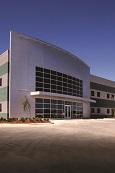
 As everyone knows, time is money. That adage is truer than ever when it’s time to erect a low-rise building, whether for business or municipal use. The sooner the facility can be built, the sooner it can be put to use, generating income for businesses and value for the community.
As everyone knows, time is money. That adage is truer than ever when it’s time to erect a low-rise building, whether for business or municipal use. The sooner the facility can be built, the sooner it can be put to use, generating income for businesses and value for the community.
The most traditional way to build is the “stick-and-brick” method, which involves using wood 2”x4”s, cutting them on-site and then supporting the walls with cinderblock or brick. Another similar method uses traditional, on-site fabrication, using steel supports instead of wood. A third method, which has been gaining in popularity and interest is pre-engineered buildings, which are also constructed using steel supports.
What is a Pre-engineered Building?
Pre-engineered is different from pre-fabricated. Typical pre-fabricated buildings have cookie-cutter designs, with little in the way of customization. However, pre-engineered buildings are engineered to order. Because of that, they can be built in virtually any size and shape and designed to meet even the most stringent local building codes.
Once a pre-engineered building is designed, the building’s systems and components are manufactured. Then, they’re delivered to the construction site ready to be assembled using high-strength, bolted connections.
From there, the builder can customize the “skin” of the structure using materials such as brick, siding and shingles. Today, facilities ranging from office buildings and large industrial plants to airplane hangars, schools and churches rely on this type of construction to get off the ground quickly, efficiently and affordably.
Custom Design and Size
One of the biggest benefits of pre-engineered construction is the ability to easily create a building in the size, shape and design right for the project.
Varco Pruden (VP) Buildings is a leader in the pre-engineered steel systems construction industry. With headquarters in Memphis, Tennessee, and six manufacturing and service centers strategically located around the country, the company manufactures about 6,000 buildings a year for projects throughout the world.
“Since we engineer-to-order, we can manufacture buildings in any size from 1,200 to 1 million square feet. We could even create buildings in star or octagonal shapes if our customer wants,” said Doug Yancey, advertising manager with Varco Pruden Buildings. “We take on challenges of architectural design and deliver a building ready to erect piece by piece.
The steel supports used in pre-engineered construction drive this flexibility.
“Steel structures, whether they’re created from traditional construction or pre-engineered, are very strong. You don’t need a stud every 14 inches like you do with wood. Instead, we can create bay widths from a single steel support framing structure with as much as 60 feet between frames,” said Yancey.
 Cost-effectiveness
Cost-effectiveness
Another benefit of going with pre-engineered construction is the considerable time savings – up to 30 percent in many cases. The standardization and computer-assisted design reduces the time spent on planning, on-site organization and construction. All of the building systems, such as the structural roof and walls, are all compatible with each other.
Because the components have already been sized and created, the construction time is significantly faster. With this method, the parts don’t have to be drilled, cut or welded on the construction site.
And because of the planning and engineering that have already been factored in, these buildings are designed to meet local codes, so permitting is frequently faster as well.
Sustainability
Pre-engineered buildings are also some of the greenest, most-sustainable ones around. With green construction, a company or organization chooses building and design options that minimize or eliminate the negative impact on the occupants, community and environment.
The steel used in pre-engineered buildings is typically from recycled sources and can be again recycled at the end of the building’s life cycle. By using steel as the primary framework for buildings, coupled with the stringent pre-engineering process, companies such as Varco Pruden take full advantage of the full strength of the material used while minimizing material costs and reducing waste. This approach helps make it possible for building owners to earn LEED certification.
Builder Jeff Tedesco, president of Tedesco Construction Services, Inc. in Lewiston, New York, said, “We do a lot of LEED projects. The recycled content of the original materials is a big incentive and helps with the LEED certification.”
Tedesco, who is an authorized Varco Pruden builder, said that VP’s multiple manufacturing facilities also help when his customers want to go LEED.
“While LEED requirements have recently changed, in the past, one of LEED’s requirements was that the products used need to be manufactured within 500 miles of the project. With VP’s six manufacturing facilities throughout the country, I was able to fulfill this requirement,” Tedesco added.
In addition, pre-engineered buildings can be engineered to take full advantage of all efficiency enhancements to reduce HVAC costs. For example, VP offers insulated wall and roof panels for maximum thermal efficiency that are ideal for controlled-environment buildings where temperature and insulation are critical. VP was also one of the very first manufacturers to introduce “cool” colors for roofing panels, which reflect solar heat and meet California’s stringent Title 24 code parameters.
 Design Flexibility
Design Flexibility
Virtually any type of low-rise structure can be constructed from a pre-engineered building.
“Tedesco Construction has built more than 300 pre-engineered buildings. This includes casinos, tennis pavilions, warehousing, recreational facilities, YMCA, sports complexes, dollar stores, manufacturing facilities, firehouses and even horse-riding stadiums. There’s no application that doesn’t apply to a pre-engineered building,” said Jeff Tedesco.
This type of construction can be endlessly customized to fit into its surroundings using a number of roofing, window and exterior options.
“About 50 percent of the time, we put other exterior wall treatments over the steel. These wall options do not have to be pre-engineered.” said Tedesco.
“You can design the interior space to meet unique business requirements and at the same time choose a custom exterior for esthetic appeal or desired image,” added VP’s Doug Yancey.
Another benefit of working with a large, pre-engineered building manufacturer such as VP is the company’s design technology. For example, VP has propriety software, called VP Command, that helps builders reduce design and estimating time, accurately detail the building structure and efficiently process materials through manufacturing.
“With this software program, we can input our design data for the project. We’ll get a price, building, drawings, loading and reactions, through the system, right in our office. We don’t have to rely on the manufacturer to input our data in their estimating department. It’s much more efficient for us,” said Tedesco.
Builders around the country – and the world – have flocked to high-quality pre-engineered buildings. By shortening the time they take to build, reducing the time it takes to receive permits, making construction easier on site and following sustainable, green practices, pre-engineered buildings simply make sense.

